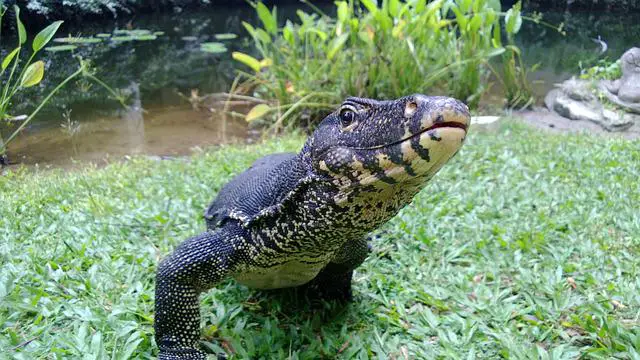Monitor lizards are some of the most fascinating creatures on Earth. They come in a variety of shapes and sizes and can be found in many different parts of the world. But one question that often comes up is whether or not monitor lizards bite. In this blog post, we will take a closer look at these reptiles to find out the answer to that question.
Introduction
Do monitor lizards bite? It’s a question that frequently comes up, particularly among those who are considering keeping one of these reptiles as a pet.
The answer, unfortunately, is not a simple one.
While monitor lizards are not typically aggressive animals, they are wild creatures with powerful jaws and sharp teeth.
And like any wild animal, they may bite if they feel threatened or provoked. That said, bites from monitor lizards are relatively rare, and most can be avoided by following some simple guidelines.
First and foremost, it’s important to never handle a monitor lizard without gloves and proper supervision.
These animals can be skittish, and sudden movements may startle them.
In addition, it’s important to avoid disturbing a monitor lizard’s eggs or young. Doing so may cause the parents to become defensive and more likely to bite.
With these precautions in mind, bites from monitor lizards are unlikely to occur.
Do monitor lizards bite people and what kind of bites are they capable of inflicting?
While monitor lizards are typically shy around people and will generally only bite if they feel threatened, their bites can be quite severe.
Monitor lizards have long, sharp teeth that can easily puncture the skin, and their bites can cause bleeding, infection, and even tissue damage.
In addition, monitor lizards can also transmit bacteria and viruses through their bites, which can lead to serious illness in humans.
As a result, it is important to exercise caution when interacting with these animals. If you are bitten by a monitor lizard, be sure to clean the wound immediately and seek medical attention as soon as possible.
How to deal with a monitor lizard if you encounter one in the wild
If you encounter a monitor lizard in the wild, it is important to stay calm and avoid making sudden movements.
Monitor lizards can be aggressive, and they have sharp claws and teeth that can cause serious injury. If you must move, do so slowly and deliberately.
If the lizard does not seem agitated, you may be able to safely move away. However, if the lizard is showing signs of aggression, it is best to stay still and wait for it to move on.
If you are attacked by a monitor lizard, use whatever you have at hand to defend yourself, such as a stick or a rock. Remember that the goal is to escape, not to fight the lizard.
With a little caution and common sense, you can avoid being harmed by a monitor lizard in the wild.
What to do if you are bitten by a monitor lizard
Monitor lizards are large, carnivorous reptiles that can be found in tropical regions around the world.
These lizards are typically harmless to humans, but they can deliver a painful bite if they feel threatened. If you are bitten by a monitor lizard, it is important to seek medical attention immediately.
The bite wound should be washed with soap and water, and a tetanus shot may be necessary. In some cases, the lizard may also transmit bacteria that can cause an infection.
Therefore, it is important to monitor the bite site closely and seek further medical treatment if the wound does not heal properly. With proper treatment, most bites from a monitor lizard will heal without any serious complications.
Monitor lizard myths and misconceptions
One of the most widespread misconceptions about monitor lizards is that they are venomous. While some species do have bacteria in their saliva that can cause infection, they are not venomous.
Another common myth is that monitor lizards are aggressive and dangerous to humans. In reality, these lizards are generally shy and reclusive, and will only attack if they feel threatened.
These myths likely originate from the fact that monitor lizards can grow to be quite large, with some species reaching lengths of over six feet.
Despite their size, monitor lizards are not a threat to humans and can actually make interesting and docile pets.
What do monitor lizards look like and where do they live?
Monitor lizards are large reptiles that are found in tropical regions around the world. They vary in size, but can typically grow to be several feet long.
Monitor lizards have long necks, powerful tails, and sharp claws. They are excellent climbers and swimmers and use their sharp claws to help them catch prey. Monitor lizards are mostly carnivorous, but some species also eat fruits and vegetables.
Most species of monitor lizard live in trees, but some can be found on the ground. Monitor lizards are often hunted for their skin, which is used to make leather goods. Some cultures also view monitor lizards as an edible delicacy.
Conclusion
So, do monitor lizards bite? While it is certainly possible for a monitor lizard to bite, it is not something that they typically do. In most cases, monitor lizards will only bite if they feel threatened or if they are trying to defend themselves. If you have a monitor lizard as a pet, it is important to handle them carefully and never try to force them to do anything that they are uncomfortable with. With proper care and handling, you should never have to worry about being bitten by your pet monitor lizard.




